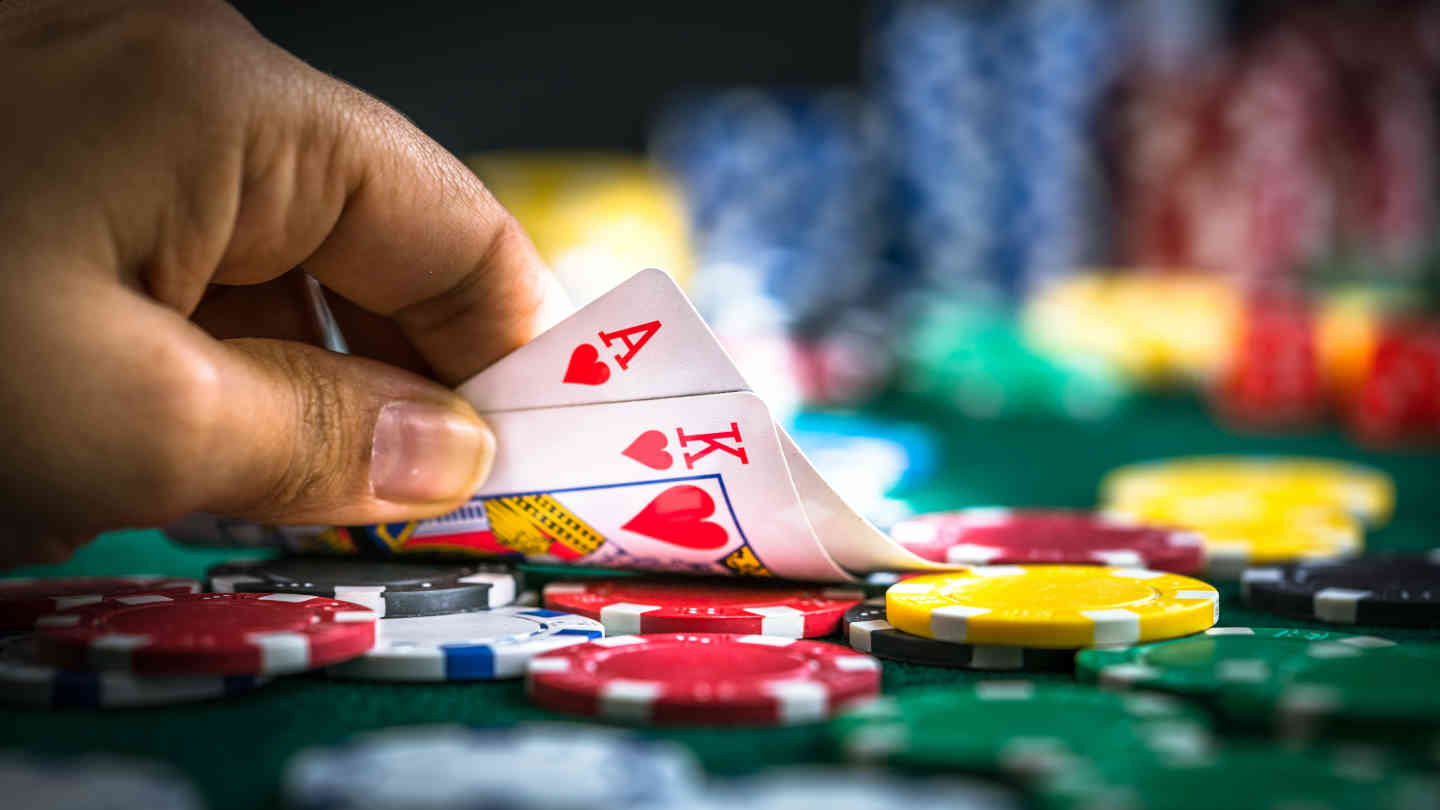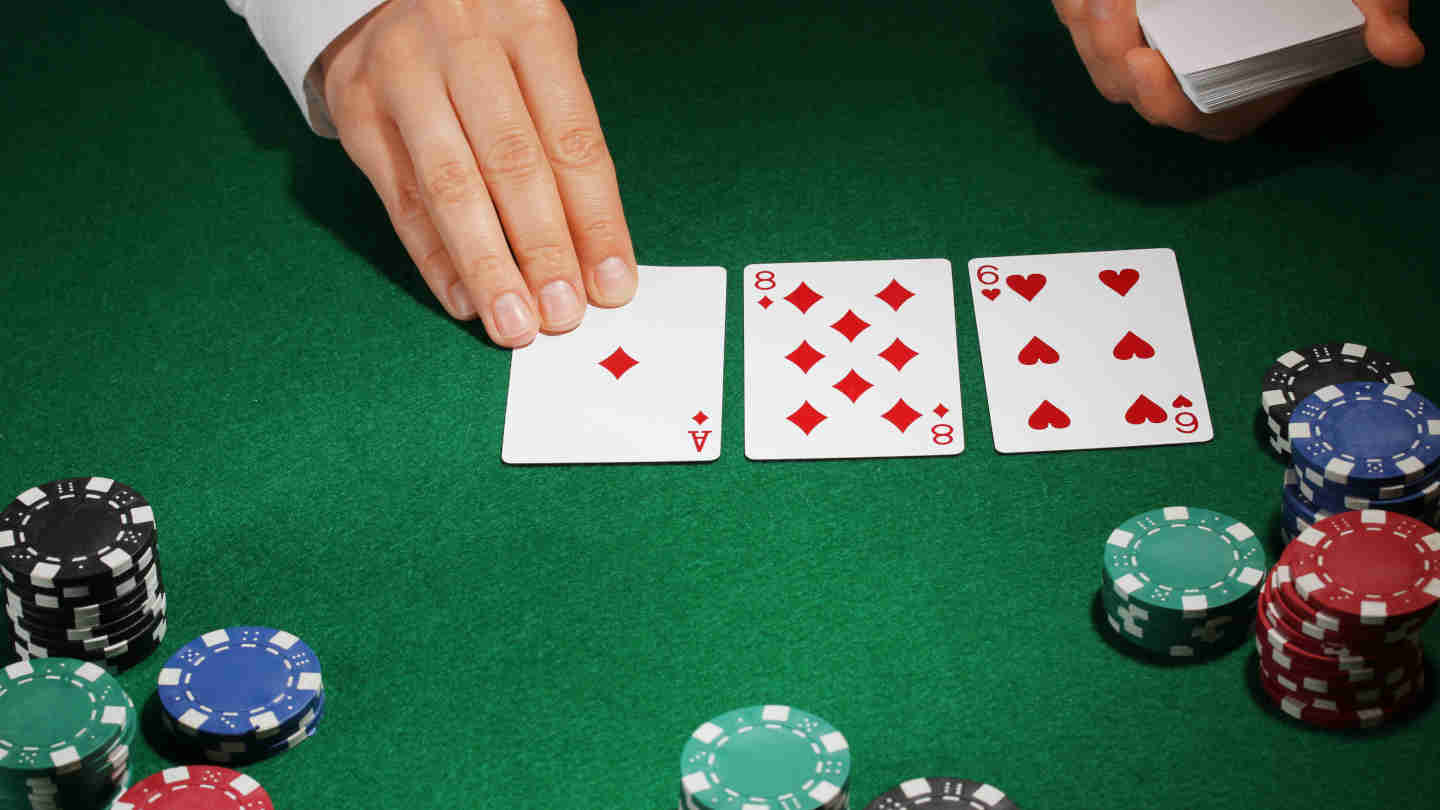Under the Gun in Poker – What Does UTG Stand for & How to Play from This Position?

11 minutes
Poker is a complex game that requires awareness and understanding of many different concepts. The impact of position is one of the most important concepts that every poker player must learn early in their career.
For the purposes of analyzing different positional situations in the game, poker players have designated each position at the poker table with a particular name.
Under the gun in poker is a name designated to the first position following the blinds, or the first player who plays before the flop in a particular poker hand.
While each poker position comes with a series of challenges a player must overcome, under the gun, or UTG as it is popularly called, is among the most difficult to maneuver.
Keep reading if you want to find out how to play from under the gun, what types of hands you should get involved with, and how to manage different stack sizes from this position.
Everything you have ever wondered about under the gun poker is right here. So, make sure you go through the entire guide and be ready the next time you are sitting under the gun.
What Does Under the Gun Stand For?
In the simplest terms, the term under the gun, or UTG, stands for the first player to play in the pot before the flop.
The UTG player is seated to the left of the big blind and will need to act first in the hand before seeing any other players’ actions.
For this reason, it is considered that the biggest amount of pressure in the hand is on this player, hence the term, under the gun.

There is no need to worry, though, as no one is going to press a gun to your head to make a play, and you will have plenty of time to decide what to do with your cards.
The worst thing that can happen is someone calling the clock on you. Some players can get impatient, and waiting for the first player to kick off the action can be frustrating to those in the late positions.
Why Is Under the Gun So Troublesome?
From a complete novice’s point of view, position does not matter at all. After all, you are dealt two cards now, and five more cards will come off on the board, making a complete poker hand for everyone.
However, this is not even close to the truth, as playing from early positions comes with a number of challenges that late position players don’t need to face.
You will be playing first in every hand that you are UTG. This means everyone else at the table will have seen your action before acting, while you will not have seen anyone’s.
This alone gives players a significant advantage over you. What’s even more, there will be many players still left to act, which is not the case when you are in a late position.
Whichever hand you are dealt under the gun, playing before the flop will be complicated.
Any situation may get out of hand even further on future streets.
For instance, your early position raises may get called by the players on the button or the cutoff, and they will have a positional advantage over you for the rest of the hand.
Going first before the flop is one thing, but going first on every street to follow is another and an even more annoying aspect of playing under the gun.
For that reason, you should be very careful when playing from UTG and should start adjusting for all these things with the very first play you make.
Which Hands to Play from UTG?
Now that you know the under the gun meaning and understand why this position can spell trouble let’s start talking about how to play from this position.
The foundation of our UTG poker strategy will be in the pre-flop hands we select to enter pots with. For all the reasons described earlier, our UTG playing range should be fairly tight.
While it may be relatively unfortunate, we will want to play very few hands from UTG in most poker formats.
In fact, we will want to play a tighter range than we would in any other position.
As you would expect, we will be opening pots with the strongest poker hands, such as AA, KK, QQ, JJ, TT, AK, and AQ, in practically every scenario. These hands are so strong that position will not hinder us too much.
Hands like KQs, KJs, QJs, and JTs are still good enough to play in most cases as well, with the exception of tournaments or other games where our stacks can get shallow.
When this is the case, we will want to fold JTs or QJs if we have too few chips to play these hands in a meaningful way.
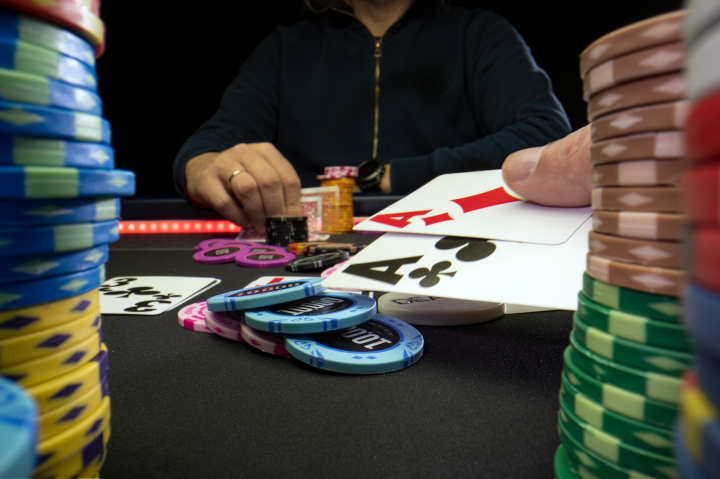
Small pocket pairs such as 22, 33, and 44 are usually folded from UTG by most experienced players. However, if the games are deep and not very aggressive, you can get away from playing these pairs as well.
Other pocket pairs are usually good enough for an open as well, while suited connectors like T9s or 98s should be played in deep stacked games.
This is pretty much where our list of hands to play from UTG ends. Anything looser than this is too loose, and playing hands like KT off-suit or 87 off-suit is a recipe for disaster if you are seated in the UTG position.
Playing UTG in Short-Handed Games
Poker is not always played at nine-handed tables, and six-max games are becoming more popular with every passing year, especially in the cash game environment.
As always, fewer players at the table means that you can loosen up your play from every position. So how does this impact our UTG opening range?
Well, it’s quite simple, really! In a six-max game, we want to open hands like A2s – A5s as well, along with hands like ATs, A9s, A8s, and AT.
Hands like KQ and KJ also become reasonable opening candidates, along with QJ. However, these hands should not be played if the table is particularly aggressive and the chances of a 3-bet are high.
You need to structure your range in a way where you have many 4-betting and calling hands in it, without many hands you have to fold when one of the players 3-bets you before the flop.
How Effective Stacks Impact Your UTG Strategy
Your UTG strategy should also depend heavily on the effective stack size at the table. What I mean by this is you should be aware of how many chips you have and how many chips your opponents have as well.
In cash games, you will often be sitting with more than 100 BBs, or even more than 300 BBs effective, which means you can get creative and play in many different ways on every street.
On the other hand, your strategy should change significantly in poker tournaments, where stack sizes can vary, and there can often be players with fewer than 10 BBs at your table.
If this is the case, you need to be aware that one of these players will often push all-in before the flop when you open the hand. Be ready to play only hands that can call off this all-in profitably.
This will mean tightening your range from UTG even further, but this is simply the way you need to play from this position to remain profitable.
Playing from UTG Before the Flop
Pre-flop is generally one of the simplest streets in poker but also one of the most important ones. If you make significant mistakes pre-flop, no amount of post-flop expertise will help you.
This is why you need to select your hands properly before the flop and also choose how to play them carefully as well.
I have already discussed how to structure your opening range from UTG in poker, and this opening range is something you should generally stick with.
The next thing to consider is what to do when you get 3-bet. This will depend both on the strength of your hand and the position of the player who 3-bet you.
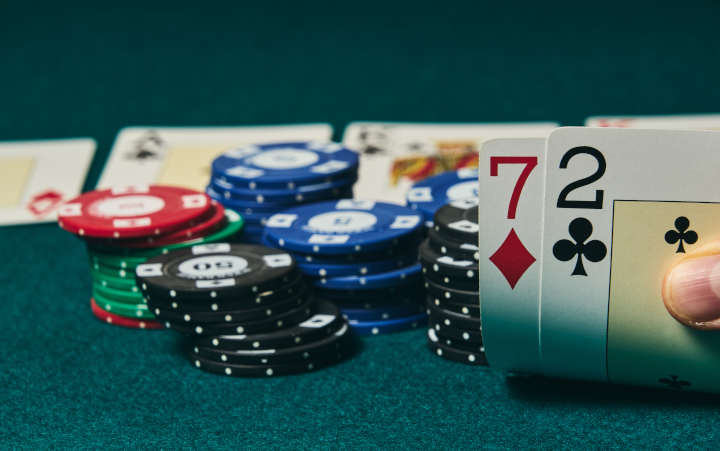
With your strongest hands like AA, KK, or AK, you will almost always want to 4-bet no matter what. However, what do we do with the weaker part of our range?
Well, we will always want to fold the hands that are at the very bottom of our range.
In this case, hands like A9s or KJs are good candidates to fold on occasion, especially against players who will have position on us.
We can absolutely make calls when we are 3-bet and holding hands like AQ, TT, or KQs, while hands like JJ and AQs are good to use for a combination of 4-bets and folds.
Finally, we should include some bluff 4-bets in our range as well.
Hands like A2s – A5s are generally considered as the best candidates for this play because of their card removal, deceptive properties, nuts potential, equity against 3-bettor’s range.
You should also be willing to set some traps before the flop with hands like AA and KK by just calling 3-bets and allowing yourself to have these monster hands in your range when you don’t 4-bet pre-flop.
What’s even more, you should be aware that you can call a bit wider against 3-bets coming from the blinds. You will be in position against these players for the remaining streets, and able to realize more of your equity than you could against the button or the cutoff.
Playing from UTG after the Flop
Once the flop has been dealt, you will often have to play first from UTG. If one of the players in the blinds is still in the hand, they will play before you.
You can start thinking about what your opponents have based on the way they played their hands before the flop.
Players who just called your raises in position will often have medium-strength hands like T9s, 88, or KTs. On the other hand, those who elected to 3-bet will have a range leaning more towards the high cards.
You should be aware of the way their ranges interact with different boards compared to your range.
For instance, A-high boards will tend to favor your range as the pre-flop opener, while boards with middle cards like 7, 8, and 9 will generally favor their range.
Playing aggressively on boards that favor your range is a smart thing to do, even if your actual hand did not connect too well with the flop.
On the other hand, you need to make sure you have some hands in your range that connect with boards like these as well, such as T9s, or 98s on occasion, especially when deeper.
What’s even more, you should remember that you can always have hands like AA, KK, and QQ in your range as the UTG opener. Those who called your raise pre-flop will seldom have such hands.
This gives you the ability to bomb many different boards and get away with bluffing with a variety of hands, as there is always the danger of you having a major pocket pair.
Playing from UTG against 3-Bets
Like I already hinted, you should play quite tight against 3-bets before the flop. You will want to fold hands like AJ or KQ if they are not suited if you decide to open these hands in the first place.
Hands like middling pocket pairs can be great for set-mining while seeing the flop with a hand like T9s or JTs can make sense if both you and your opponent are deep-stacked.
Once the flop comes off, keep in mind that the range advantage on different boards has now changed. You should no longer have too many AA or KK combos, while your opponent should have all of them.
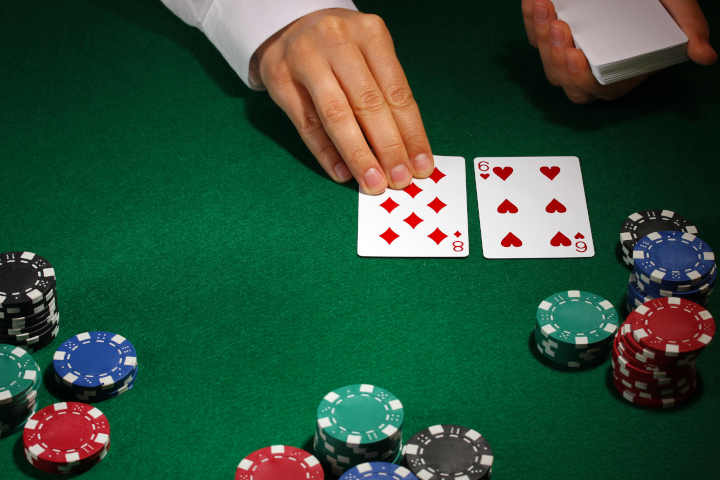
Similarly, you will be the one with more speculative hands like KQs or T9s, while your opponent should, in theory, have more hands like AK and AQ having 3-bet against a UTG open.
Starting off the flop round with a check is generally the right play, as you will not want to “donk bet” very often at all.
From here, you should proceed with a mix of folds, calls, and raises depending on the strength of your hand.
You should keep in mind that check-raise bluffs with hands like gutshot straight draws with overcards can work well on middling boards. Flush draws will be a nearly mandatory check-raise a large portion of the time.
You will want to take some aggressive lines when they can seem credible because it will be very hard for you to get to the river and realize your full equity.
Since you will be playing first on every street, each new card will give your opponent a chance to bet into you and blow you off your drawing hand.
Under the Gun Poker in a Nutshell
You now know what under the gun stands for in poker, what the main problems are with playing in this position, and how you should adjust your general strategy when in it.
This short guide will not instantly make you a monster when playing from UTG, but you should generally have a good idea of how to structure a game plan and be ready to take on your opponents when seated UTG.
You will need to play many hands and spend many hours in the lab to learn how to play the best possible game from under the gun. But, if you apply the ideas I gave you here, you will be on the right path.
The next thing to do is join some real money poker games and apply your newly found UTG poker skills at the tables and see just how your luck will change by playing a more appropriate UTG strategy.
- Poker Squeeze Play – Which Hands Make the Most Sense for Squeezing? - August 10, 2023
- How to Play Low Pocket Pairs in Texas Hold’em - July 29, 2023
- How to Make Deep Runs in MTTs More Often - July 22, 2023












